| Weight | 1 lbs |
|---|---|
| Dimensions | 9 × 5 × 2 in |
| host | goat |
| isotype | IgG |
| clonality | polyclonal |
| concentration | 1 mg/mL |
| applications | ICC/IF, WB |
| reactivity | Agarose immobilized, c-myc |
| available sizes | 100 µg |
goat anti-Agarose Immobilized c-myc polyclonal antibody 9339
$496.00
Antibody summary
- Goat polyclonal to Agarose Immobilized
- Suitable for: IP
- Isotype: Whole IgG
- 100 µg
goat anti-Agarose Immobilized c-myc polyclonal antibody 9339
| antibody |
|---|
| Tested applications IP |
| Recommended dilutions Immunoprecipitation: use at 15-25ul of gel slurry per 0.1-1mg of protein extract or lysate. These are recommended concentrations. End users should determine optimal concentrations for their applications. |
| Immunogen Amino acids 410-419 (EQKLISEEDL) of human myc conjugated to KLH. |
| Size and concentration 100µg and lot specific |
| Form liquid |
| Storage Instructions This antibody is stable for at least one (1) year at 2-8°C. |
| Storage buffer Phosphate Buffered Saline (PBS) containing 0.09 |
| Purity peptide affinity purification |
| Clonality polyclonal |
| Isotype IgG |
| Compatible secondaries donkey anti-goat IgG, H&L chain specific, peroxidase conjugated polyclonal antibody 1689 donkey anti-goat IgG, H&L chain specific, biotin conjugated polyclonal antibody 1699 donkey anti-goat IgG, H&L chain specific, FITC conjugated polyclonal antibody 1704 donkey anti-goat IgG, H&L chain specific, peroxidase conjugated polyclonal antibody, crossabsorbed 1709 donkey anti-goat IgG, H&L chain specific, FITC conjugated polyclonal antibody, crossabsorbed 1705 |
| Isotype control Goat polyclonal - Isotype Control |
| target relevance |
|---|
| Protein names Myc proto-oncogene protein (Class E basic helix-loop-helix protein 39) (bHLHe39) (Proto-oncogene c-Myc) (Transcription factor p64) |
| Gene names MYC,MYC BHLHE39 |
| Mass 50565Da |
| Function FUNCTION: Transcription factor that binds DNA in a non-specific manner, yet also specifically recognizes the core sequence 5'-CAC[GA]TG-3' (PubMed:24940000, PubMed:25956029). Activates the transcription of growth-related genes (PubMed:24940000, PubMed:25956029). Binds to the VEGFA promoter, promoting VEGFA production and subsequent sprouting angiogenesis (PubMed:24940000, PubMed:25956029). Regulator of somatic reprogramming, controls self-renewal of embryonic stem cells (By similarity). Functions with TAF6L to activate target gene expression through RNA polymerase II pause release (By similarity). Positively regulates transcription of HNRNPA1, HNRNPA2 and PTBP1 which in turn regulate splicing of pyruvate kinase PKM by binding repressively to sequences flanking PKM exon 9, inhibiting exon 9 inclusion and resulting in exon 10 inclusion and production of the PKM M2 isoform (PubMed:20010808). {ECO:0000250|UniProtKB:P01108, ECO:0000269|PubMed:20010808, ECO:0000269|PubMed:24940000, ECO:0000269|PubMed:25956029}. |
| Subellular location SUBCELLULAR LOCATION: Nucleus, nucleoplasm {ECO:0000269|PubMed:17558397}. Nucleus, nucleolus {ECO:0000269|PubMed:17558397, ECO:0000269|PubMed:25775507, ECO:0000269|PubMed:38225354}. Nucleus {ECO:0000269|PubMed:22719065, ECO:0000269|PubMed:38225354}. Cytoplasm {ECO:0000269|PubMed:22719065}. Note=Localization to the nucleolus is dependent on HEATR1. {ECO:0000269|PubMed:38225354}. |
| Structure SUBUNIT: Efficient DNA binding requires dimerization with another bHLH protein. Binds DNA as a heterodimer with MAX (PubMed:9680483). Interacts with TAF1C and SPAG9. Interacts with PARP10. Interacts with KDM5A and KDM5B. Interacts (when phosphorylated at Thr-73 and Ser-77) with FBXW7 (PubMed:17558397, PubMed:25775507). Interacts with PIM2. Interacts with RIOX1. The heterodimer MYC:MAX interacts with ABI1; the interaction may enhance MYC:MAX transcriptional activity. Interacts with TRIM6 (By similarity). Interacts with NPM1; the binary complex is recruited to the promoter of MYC target genes and enhances their transcription (PubMed:25956029). Interacts with CIP2A; leading to the stabilization of MYC (PubMed:17632056). Interacts with NUP205 (PubMed:22719065). Interacts with HEATR1; the interaction is required for localization of MYC to the nucleolus (PubMed:38225354). {ECO:0000250|UniProtKB:P01108, ECO:0000269|PubMed:15103331, ECO:0000269|PubMed:15674325, ECO:0000269|PubMed:15723054, ECO:0000269|PubMed:17308053, ECO:0000269|PubMed:17311883, ECO:0000269|PubMed:17558397, ECO:0000269|PubMed:17632056, ECO:0000269|PubMed:17873522, ECO:0000269|PubMed:22719065, ECO:0000269|PubMed:25775507, ECO:0000269|PubMed:25956029, ECO:0000269|PubMed:38225354, ECO:0000269|PubMed:9680483}. |
| Post-translational modification PTM: Phosphorylated by PRKDC (PubMed:1597196). Phosphorylation at Ser-344 by PIM2 leads to the stabilization of MYC (By similarity). Phosphorylation at Ser-77 by CDK2 prevents Ras-induced senescence (PubMed:19966300, PubMed:20713526). Phosphorylated at Ser-77 by DYRK2; this primes the protein for subsequent phosphorylation by GSK3B at Thr-73 (PubMed:22307329). Phosphorylation at Thr-73 and Ser-77 by GSK3 is required for ubiquitination and degradation by the proteasome (PubMed:15103331, PubMed:17558397, PubMed:8386367). Dephosphorylation at Ser-77 by protein phosphatase 2A (PPP2CA) promotes its degradation; interaction with PPP2CA is enhanced by AMBRA1 (PubMed:25438055, PubMed:25803737). {ECO:0000250|UniProtKB:P01108, ECO:0000269|PubMed:15103331, ECO:0000269|PubMed:1597196, ECO:0000269|PubMed:17558397, ECO:0000269|PubMed:19966300, ECO:0000269|PubMed:20713526, ECO:0000269|PubMed:22307329, ECO:0000269|PubMed:25438055, ECO:0000269|PubMed:25803737, ECO:0000269|PubMed:8386367}.; PTM: Ubiquitinated by the SCF(FBXW7) complex when phosphorylated at Thr-73 and Ser-77, leading to its degradation by the proteasome (PubMed:15103331, PubMed:17558397, PubMed:25775507). In the nucleoplasm, ubiquitination is counteracted by USP28, which interacts with isoform 1 of FBXW7 (FBW7alpha), leading to its deubiquitination and preventing degradation (PubMed:17558397, PubMed:17873522). In the nucleolus, however, ubiquitination is not counteracted by USP28 but by USP36, due to the lack of interaction between isoform 3 of FBXW7 (FBW7gamma) and USP28, explaining the selective MYC degradation in the nucleolus (PubMed:17558397, PubMed:25775507). Also polyubiquitinated by the DCX(TRPC4AP) complex (PubMed:20551172, PubMed:29779948). Ubiquitinated by UBR5 when not forming a heterodimer with another bHLH protein, leading to its degradation: UBR5 recognizes and binds a degron that is only available upon heterodimer dissociation (PubMed:33208877, PubMed:37478862). Ubiquitinated by TRIM6 in a phosphorylation-independent manner (By similarity). {ECO:0000250|UniProtKB:P01108, ECO:0000269|PubMed:15103331, ECO:0000269|PubMed:17558397, ECO:0000269|PubMed:17873522, ECO:0000269|PubMed:20551172, ECO:0000269|PubMed:25775507, ECO:0000269|PubMed:29779948, ECO:0000269|PubMed:33208877, ECO:0000269|PubMed:37478862}. |
| Domain DOMAIN: The 9aaTAD motif is a transactivation domain present in a large number of yeast and animal transcription factors. {ECO:0000269|PubMed:34342803}. |
| Biotechnology BIOTECHNOLOGY: POU5F1/OCT4, SOX2, MYC/c-Myc and KLF4 are the four Yamanaka factors. When combined, these factors are sufficient to reprogram differentiated cells to an embryonic-like state designated iPS (induced pluripotent stem) cells. iPS cells exhibit the morphology and growth properties of ES cells and express ES cell marker genes. {ECO:0000269|PubMed:18035408}. |
| Involvement in disease DISEASE: Note=A chromosomal aberration involving MYC may be a cause of a form of B-cell chronic lymphocytic leukemia. Translocation t(8;12)(q24;q22) with BTG1. {ECO:0000269|PubMed:2069907}.; DISEASE: Burkitt lymphoma (BL) [MIM:113970]: A form of undifferentiated malignant lymphoma commonly manifested as a large osteolytic lesion in the jaw or as an abdominal mass. {ECO:0000269|PubMed:2166998, ECO:0000269|PubMed:8220424}. Note=The gene represented in this entry is involved in disease pathogenesis. Chromosomal aberrations involving MYC are usually found in Burkitt lymphoma. Translocations t(8;14), t(8;22) or t(2;8) which juxtapose MYC to one of the heavy or light chain immunoglobulin gene loci. |
| Target Relevance information above includes information from UniProt accession: P01106 |
| The UniProt Consortium |
Data
| No results found |
Publications
Warning: Cannot modify header information - headers already sent by (output started at /www/benchmarkantibodiescom_769/public/wp-includes/script-loader.php:3015) in /www/benchmarkantibodiescom_769/public/wp-content/plugins/shortcode-manager/shortcode-manager.php(453) : eval()'d code on line 3
Publications
| pmid | title | authors | citation |
|---|---|---|---|
| We haven't added any publications to our database yet. | |||
Protocols
| relevant to this product |
|---|
| Western blot IHC ICC |
Documents
| # | SDS | Certificate | |
|---|---|---|---|
| Please enter your product and batch number here to retrieve product datasheet, SDS, and QC information. | |||
Only logged in customers who have purchased this product may leave a review.
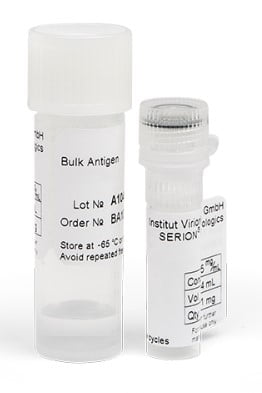
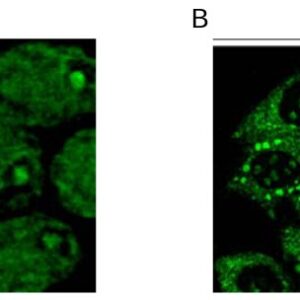

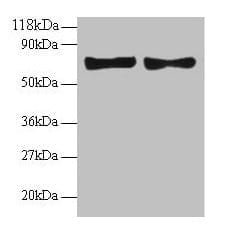
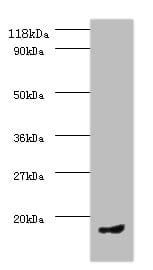

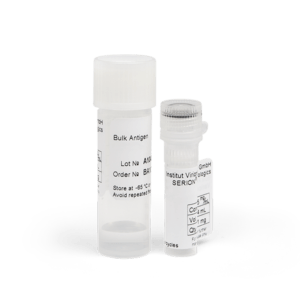

Reviews
There are no reviews yet.